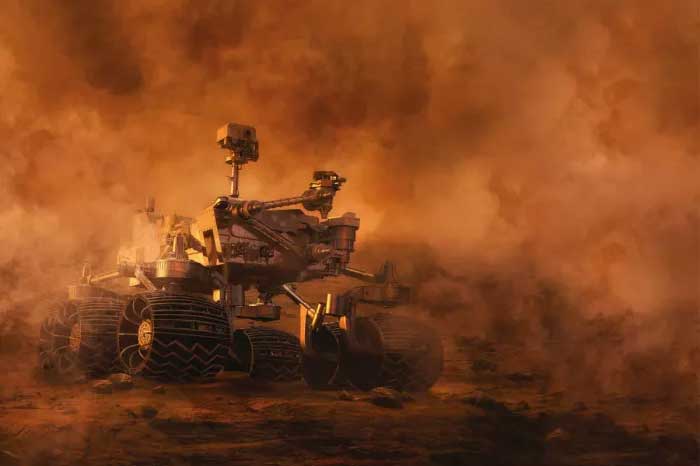The Distributed Extreme Environment Drive System (DEEDS) is an advanced space-rated avionic and actuation control system that addresses a wide thermal range of operations for harsh environments. This new technology development, undertaken by Motiv Space Systems (Motiv), addresses some of the most stringent environmental requirements of lunar and deep space exploration. It will enable sustained operations for critical systems like lunar rovers, robotics, cranes, offload equipment, ISRU processing equipment, and cargo manipulation systems. DEEDS was funded under NASA’s SBIR ‘Moon to Mars’ Sequential Program and builds on previously established cryogenic operating avionic SBIR-funded technologies that have been successfully commercialized for orbital and lunar lander systems.
SYSTEM CAPABILITIES
DEEDS is made up of a highly capable avionic motion control system that is integrated with a modular mechanical drive system. A first of its kind, Motiv is driving technology maturation through a test and qualification program that will validate a scalable architecture benefitting any of the primary developers of lunar exploration equipment that needs to operate well beyond the typical single lunar cycle mission. DEEDS is intended to show operational thermal cycling lifetimes of greater than five years and become critically infused technology for Artemis and other deep space missions.
DEEDS’ avionics leverage decades of prior JPL/NASA/Industry research dedicated to identifying components that operate at -180°C and tolerate 125°C. Specific families of electronic components demonstrate normal functionality at cryogenic temperatures and allow for integrated systems to meet the functional needs of operating in Permanently Shadowed Regions (PSRs), Mars polar sites, or deep space ocean worlds such as Europa or Enceladus without the reliance upon survival heating. This “built-in resilience” yields savings in power and mass attributed to thermal management systems. Motiv has taken the approach of design for the environment to the extremes by qualifying hardware to sustain and operate through these harsh environments at the core technology level. The design objectives also include utilizing 100 krad components throughout.
The capabilities of the DEEDS controller section are significant, with a 28V-120V wide operating input bus voltage range. These voltages span typical spacecraft operational ranges for both robotic and human exploration critical systems. Total current production reaches up to 20A and approaches 2.5 kW of output power. Dual brake controls exist for either power-off systems, which require pull-in capabilities for operation, or power-on brakes used to energize restraint systems when utilized in systems that require active braking, such as human-driven rovers. The controller is also outfitted with dual resolver sensing for fine resolution when operations dictate fine positioning or velocity controls. Finally, the controller supports a variety of commutation schemes as required by the operation serviced.
Operational modes include a closed-loop control schema for velocity and position control. For specific torque control dominated operations, both current control and utilization of locally derived actuator torque sensing are available. The controller also supports motion profiling to execute various user-defined operations.
BULK METALLIC GLASS
In addition to the cryogenic avionic operations, Motiv is leveraging the emergence of Bulk Metallic Glass (BMG) in the construction of the geared torque production system. The actuation system is a scalable, modular component that allows for multiple stages of planetary gearing, a power-off brake (typical for robotic operations), a power-on brake (equivalent to the brake pedal in a vehicle), fine resolution output resolver sensing, and a cryogenic brushless DC motor. This can be adjusted to meet specific output torque production needs as required by varied user applications. Recent developments in BMG materials used in planetary gear systems have shown excellent wear properties with specific alloys. Not only does the material wear well with minimal galling, but gears have been operated cryogenically without the need for lubricants. Demonstrating long-life operations, down to -180°C, through dozens of deep thermal cycles, consistent with a lunar rover mission of 5+ years, is a game-changing achievement.
While configurable to a multitude of operational cases and configurations, the initial DEEDS specification was based upon a popular “corner case” promoted by NASA’s LTV definition. The LTV specification is desirous of a 500 kg rover with a 500 kg payload capacity, >10 kmph traverse, and capabilities for cornering and driving up and down inclines. The extrapolated requirements established the electrical and mechanical requirements for an LTV wheel system supported by the DEEDS architecture.
Link to original article:








